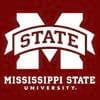Impact of translucency score and trace mineral supplementation on eggshell quality parameters
Published: February 19, 2024
Source : Cassidy Morris* 1GS, Jonathan Moon 1, Michael Carroll 1, Leticia Orellana 2, Raquel Burin 3, Colwayne Morris 3, Austin Jasek 3, Duarte Neves 3, Ken Macklin 1 / 1 Mississippi State University; 2 Auburn University; 3 Zinpro Corporation.
Duarte Neves (Zinpro)
The poultry industry is facing a problem with the fertility of broiler breeder eggs. The use of elevated amounts of trace minerals such as zinc (Zn), manganese (Mn), and copper (Cu) within a broiler breeder diet has been previously linked to an increase in eggshell quality, which in turn may lead to an increased fertility rate. A parameter that has been linked to an increased eggshell quality is shell translucency. The translucency level of the eggshell can be affected by the mineral levels within the diet. In this study, Zn, Mn, and Cu were added to the water of a commercial broiler breeder house at the level of 40, 40, 7 ppm, respectively. This was conducted on four farms with the second adjacent house not receiving any additional trace mineral supplementation. The objectives of this study were to explore the effects of added amino-acid complexed minerals supplementation on shell translucency scores, coloration lightness (L score), thickness, and breaking strength. In addition, the effect of eggshell translucency score on L score, thickness, and breaking strength was also determined. Translucency was completed with Zinpro® BlueBoxTM using a 3-point score system: TS1 = none or few small translucent spots; TS2 = several small translucent spots; TS3 = many large translucent spots. Data was analyzed using PROC GLM procedures in SAS 9.4 with alpha set at 0.05; means were separated by Tukey’s Studentized Range Test when appropriate. The results showed that mineral supplementation increased the L score from 74.9 to 75.1 (P=0.0245), increased shell thickness from 0.451mm to 0.455mm (P< 0.0402), increased TS1 eggs by 1.05%, increased TS2 eggs by 5.86%, and decreased TS3 eggs by 6.91% (P< 0.0001). Significance was found in shell thickness (P< 0.0001) between all levels of translucency: TS1 eggs (0.462mm), TS2 eggs (0.452mm), and TS3 eggs (0.440mm). Significance was also found for L score (P< 0.0001) between TS3 eggs (74.2) when compared to TS1 (74.8) and TS2 (75.2) eggs. This study suggests that translucency score is an effective predicting parameter for other eggshell quality characteristics. It also suggests that amino-acid complexed minerals supplementation to broiler breeders can positively impact eggshell quality.
Key Words: translucency scores, trace mineral supplementation, eggshell quality, broiler breeders.
Abstract presented at the International Poultry Scientific Forum at IPPE 2024 in Atlanta, USA.
Content from the event:
Related topics:
Mentioned in this news release:




Zinpro
Zinpro
Zinpro

Show more
Recommend
Comment
Share

Would you like to discuss another topic? Create a new post to engage with experts in the community.














